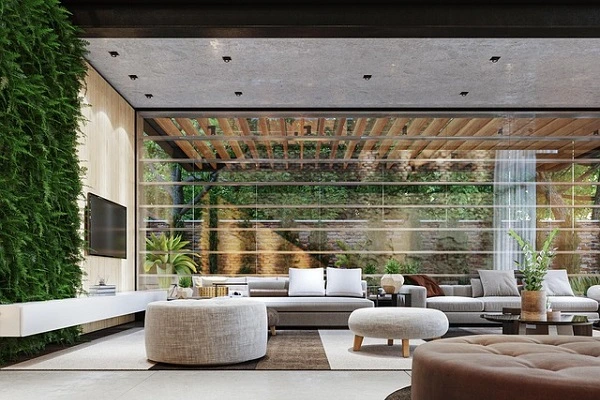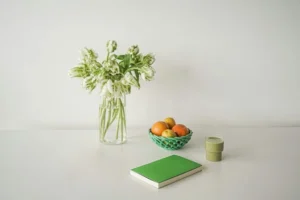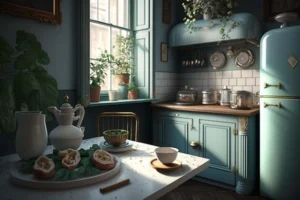Lofts have a special charm—open layouts, high ceilings, and a modern, airy feel. But growing vegetables indoors can be surprisingly tricky when space is at a premium.
Windowsill pots quickly crowd your light, and traditional garden beds are out of the question. That’s where smart, vertical growing systems come in.
One standout is the Gravity-Fed Vegetable Grow Column. It’s slim, stylish, and uses gravity—not noisy pumps—to keep plants thriving. Less energy, less hassle, more freshness.
In this article, we’ll explore how this system works, why it’s perfect for loft living, and the design features that make it both functional and beautiful.
What Makes a Gravity-Fed Grow Column Different from Other Hydroponic Systems
Not all hydroponic systems are created equal. While most rely on electric pumps to move nutrient-rich water to plants, a gravity-fed column lets physics do the work. Water flows downward naturally, feeding each tier in sequence.
This approach has a few key advantages for loft dwellers. First, it’s whisper-quiet. With no pump humming in the background, it blends seamlessly into your living space. You’ll hear nothing but the occasional drip—almost meditative.
Second, it’s energy-efficient. Without a pump to power, the system consumes far less electricity. In an age of rising utility costs, that’s a benefit you’ll feel every month.
Third, there’s less that can break. Pump-driven systems can fail if parts wear out or clog. Gravity-fed setups are mechanically simple, meaning fewer maintenance headaches.
They’re also naturally scalable. You can add more tiers to take advantage of loft ceilings without re-engineering the water flow. Gravity works the same whether you have three levels or ten.
This isn’t just about convenience—it’s about creating a low-maintenance, high-reward system tailored for compact urban spaces. By removing pumps from the equation, you gain a quieter, more reliable, and more stylish way to grow fresh produce at home.
Designing a Column That Works with Loft Architecture
Lofts have unique advantages for vertical gardening—namely, height. But designing a gravity-fed grow column for a loft isn’t as simple as stacking tiers sky-high. You need a balance between vertical reach and easy access.
A tall column should still let you comfortably harvest and prune without needing a ladder every time. Many loft gardeners find the sweet spot is between five and seven feet, leaving plenty of space above for airflow and light fixtures.
The footprint matters, too. A slim base lets you tuck the column into a corner or beside a window without crowding your living area. The narrower the base, the more it feels like part of the room rather than an obstacle.
Aesthetics are just as important in loft design. Materials like brushed metal, reclaimed wood panels, or minimalist PVC can help the column blend with modern or industrial interiors. Think of it as both a growing system and a sculptural piece.
Lighting is another consideration. Even in a bright loft, upper tiers may block sunlight from reaching the lower ones. Adjustable LED strips or overhead grow lights can keep every level productive throughout the year.
When thoughtfully designed, your gravity-fed column won’t just fit your loft—it will enhance it.
The Core Components of a Loft-Optimized Gravity-Fed System
A gravity-fed vegetable grow column works because each part is designed with purpose. Let’s break down the essentials that keep it efficient and loft-friendly.
Reservoir
The reservoir is the heart of the system, holding the nutrient-rich water. In a loft setup, it can be placed at the bottom for easy, discreet refills, or at the top for a stronger, more even flow through the column.
Stackable Grow Modules
These are the tiers where your plants live—cylindrical pods, trays, or perforated tubes that channel water downward. They’re engineered to prevent leaks or pooling, keeping roots happy and the system tidy.
Grow Media
Instead of soil, use lightweight, absorbent materials like coconut coir or clay pebbles. These promote capillary action, so roots stay hydrated between cycles. Dense soils slow drainage and disrupt gravity-fed flow.
Water Distribution Outlets
Drippers or perforated plates slow the water’s descent, giving roots time to absorb nutrients before the excess moves down to the next level.
Structural Frame
This keeps the column stable and can be styled to match your loft—brushed metal, reclaimed wood, or minimalist PVC for a modern look.
When all these components work together, you get a low-maintenance, energy-efficient system that turns vertical space into a productive, beautiful part of your home.
Plant Selection for Vertical Gravity-Fed Columns in Small Urban Spaces
Choosing the right plants is the secret to getting the most from your gravity-fed grow column. Not every vegetable or herb plays nicely in a vertical setup, especially when space and light are limited.
Leafy greens are the all-stars here. Varieties like lettuce, spinach, and kale thrive in vertical systems because they grow quickly, stay compact, and don’t demand deep root space. They also give you a steady harvest cycle—perfect for daily salads.
Herbs are another great choice. Basil, parsley, mint, and chives adapt well to the gentle water flow of a gravity-fed system. They’re lightweight, fragrant, and visually appealing when grown in cascading tiers.
For a splash of color and variety, try dwarf tomatoes or chili peppers. These compact fruiting plants add visual interest but won’t overtake the column if you choose determinate or patio varieties.
Avoid plants with deep taproots—like carrots—or heavy vining crops that need sprawling support. They can strain the structure and disrupt water distribution.
Think seasonally, too. In a loft, temperature stays fairly stable, but sunlight shifts. Having a mix of cool-season and warm-season crops ensures your column produces fresh food year-round.
The right plant choices turn your column from a clever system into a constant source of beauty and flavor.
Performance & Efficiency in a Loft Environment
A gravity-fed vegetable grow column isn’t just about saving space—it’s about delivering consistent results with minimal fuss. In a loft, that balance between performance and efficiency matters more than ever.
Because water moves naturally from tier to tier, nutrients are evenly distributed without the pulsing surges you sometimes get from pump-driven systems. Each plant gets a steady sip instead of a sudden flood, which keeps growth steady and healthy.
Water use is also impressively low. Since the flow is controlled and recirculated, you’ll waste far less than traditional container gardening. That’s a big win if you’re conscious about utility costs or sustainability.
Humidity is one consideration in loft living. While plants release moisture into the air, a well-designed column minimizes excess evaporation. You’ll still get that fresh, garden-like feel—without turning your space into a rainforest.
Yields are realistic for small households. A single column can provide enough greens and herbs for daily meals, with seasonal extras like tomatoes or peppers for variety. You won’t replace the grocery store entirely, but you’ll notice a lighter produce bill.
In short, performance in a loft is all about harmony: steady plant growth, low water use, manageable humidity, and a setup that looks as good as it produces.
Customizing for Style and Function in Your Loft
A gravity-fed vegetable grow column isn’t just a growing system—it’s a design feature. In a loft, where every element is on display, customization can make your column feel like a natural part of the space.
Start with cladding. Wrapping the frame in brushed metal panels, reclaimed wood slats, or matte PVC instantly changes its personality. Industrial loft? Go for raw steel. Minimalist vibe? Smooth, white surfaces keep it sleek.
Lighting upgrades can turn your column into a statement piece. Adjustable LED grow lights not only support plant strength but also cast a warm, inviting glow in the evenings.
For functionality, consider adding smart sensors. These can monitor nutrient levels, water volume, and pH, sending alerts straight to your phone. It’s low-maintenance growing, with a high-tech twist.
Mobility is another plus. Mounting the column on locking casters makes it easy to shift for better sunlight or to rearrange your space. It’s especially handy if you host gatherings and want to feature the column front and center.
By tailoring both the look and the performance, your gravity-fed column becomes more than a food source—it becomes part of your loft’s identity. It’s style meeting sustainability, right in your living room.
Bringing Vertical Abundance to Loft Living
A gravity-fed vegetable grow column proves that growing food indoors doesn’t have to mean bulky setups or constant maintenance. In a loft, it’s both a space-saver and a conversation piece.
By harnessing gravity, you cut energy use, reduce noise, and simplify upkeep—all while enjoying fresh produce year-round. The design adapts to your style, whether you want industrial, rustic, or minimalist vibes.
It’s more than just a garden; it’s a functional feature that adds beauty, greenery, and flavor to your home. Your loft’s vertical space is valuable—why not fill it with something that nourishes both your body and your living space?




